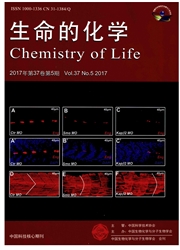

 中文摘要:
中文摘要:
盐诱导激酶2(salt-inducible kinase 2, SIK2)是一种丝氨酸/苏氨酸蛋白激酶,属于AMP活化蛋白激酶(adenosine monophosphate-activated protein kinase, AMPK)亚家族成员之一。SIK2基因在脂肪组织中的表达水平最高,通过磷酸化负调节cAMP反应元件结合蛋白(cAMP-responsive element-binding protein,CREB)调节转录共激活子(CREB-regulated transcription co-activator, CRTC/TORC)2、3的活性;通过磷酸化p300/CBP,影响糖原异生和脂质合成相关基因的表达,在脂肪和糖代谢中发挥重要作用。另一方面,在营养缺乏等状态下,SIK2的Lys-53可被p300/CBP乙酰化暂时失去激酶活性并向胞浆中自吞噬体内聚集,在此被组蛋白去乙酰化酶6(histone deacetylase 6,HDAC6)去乙酰化而激活,参与自吞噬体与溶酶体融合及细胞自吞噬过程的调节。SIK2可望成为肥胖、糖尿病等代谢性疾病治疗的新靶点。
 英文摘要:
英文摘要:
Salt-inducible kinase 2 (SIK2) is a serine/threonine protein kinase belonging to the member of AMP-activated protein kinase subfamily. The highest expression level of SIK2 gene was found in the fatty tissue. SIK2 phosphorylates the cAMP-responsive element-binding protein (CREB)-regulated transcription co-activator 2 and 3 (CRTC2; CRTC3), and negatively regulates the transcription activity of these proteins. SIK2 can also phosphorylate the p300/CBP, which in turn modulates the expression of a series of genes related to gluconeogenesis and lipid synthesis, and regulates the metabolisms of glucose and lipid. The Lys-53 of SIK2 is inactivated by p300/CBP-mediated acetylation under the stress of nutritional deficiencies. The sequestrated acetylated SIK2 migrates from the cytosol into the autophagosome. SIK2 regains its kinase activity in autophagosome through deacetylation mediated by histone deacetylase 6 (HDAC6), and is involved in the fusing of autophagosome and lysosome and autophagy processing. Hence, SIK2 is expected to become a new target for the therapy of metabolic syndromes, e.g. obesity and diabeies.
 同期刊论文项目
同期刊论文项目
 同项目期刊论文
同项目期刊论文
 期刊信息
期刊信息
